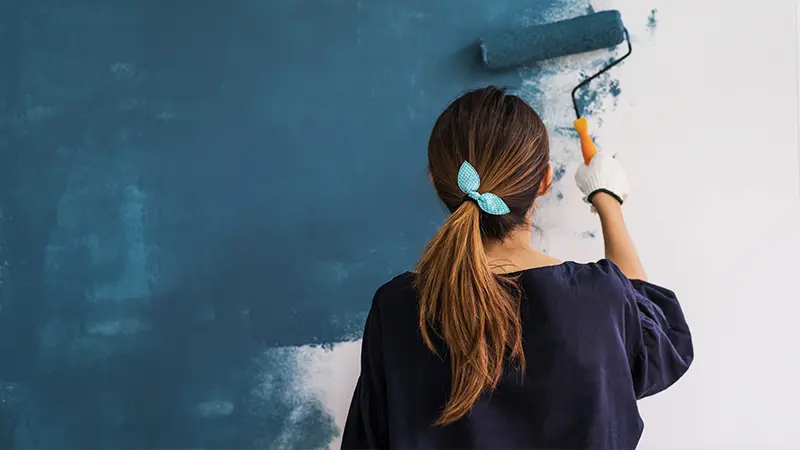When looking to repaint your walls, you might be tempted to just pick up a brush and go. But the key to achieving a smooth finish lies in the preparation.
Here are a few painting fundamentals that can save you valuable time and effort.

Table of Contents
What You Need
- Selleys Spakfilla Rapid
- Selleys No More Gaps
- Liquid Sugar Soap
- Flexible filling blade
- Fine sandpaper
- Sanding block
- Soft clean cloth
- Drop sheet
- Hammer
How To
1. Clean the area
- Lay down your drop cloth in the area you’ll be working, then use the sandpaper and sanding block to remove any uneven surfaces and crumbling paint flakes. Remove any nails or pins from the wall with your hammer.
- Dilute some Liquid Sugar Soap with water (follow the instructions on the bottle) and use a cloth to remove any dirt or dust from the wall. Allow surfaces to completely dry before continuing.
2. Fill and cracks or holes
- Fill any cracks, scratches, dents, or nail or screw holes before continuing. Apply a small amount of Selleys Spakfilla Rapid to your filling blade and draw it across each imperfection. Skim the filled areas lightly in both directions a few times to ensure there are no air bubbles, then remove any excess by drawing down the surface firmly with your filling blade.
- Allow the first application to dry, then sand down lightly. Remove any dust with a soft dry brush.
- Apply a second coat of Selleys Spakfilla Rapid if shallow dents and small holes are still not perfectly smooth.
3. Fill the gaps
- Next you’ll need to fill the gaps between any skirting boards or architraves with Selleys No More Gaps and the wall. Use a dry clean cloth to make sure the surface you’re working is dry and free of any dust.
- Cut the tip of the cartridge, then cut the nozzle at a 45 degree angle. Attach the cartridge to the caulking gun and the nozzle to the cartridge.
- Tilting the gun at a 45 degree angle, dispense the product into the gap making sure sufficient gap filler is forced into the gap.
- Use a wet finger to smooth over your work, and clean up any excess product with a damp cloth.
- Allow 20 minutes if you plan to paint the surface using a water-based paint, or 2 hours if you’re using ceiling or oil-based paints.
4. Smooth the surface
- Finally, use sandpaper or a sander to smooth over each filled section of the wall so that it’s even with the surrounding surface. After that simply brush your surfaces thoroughly with a soft brush or broom and wipe down with a cloth to remove any dust.
Handy Tips
- It is important to put a drop sheet down just in case you spill anything or you just don’t want to damage the floor.
- To minimise sanding and obtain a perfect finish, tool/spread to a ‘feather’ edge when applying filler.
- For a neat clean finish, before applying your gap filler, tape both sides of the gap before applying the product.
- Before applying Selleys No More Gaps, extrude a small amount onto a piece of scrap material to ensure a smooth continuous flow of gap filler, and a perfect finish.

